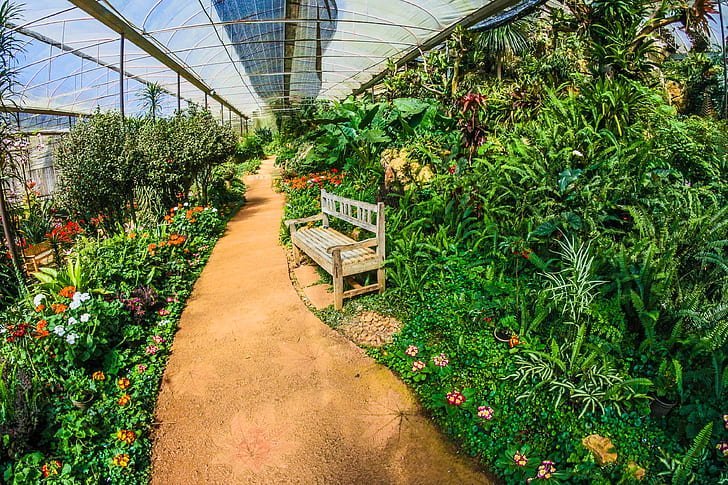Are you wondering how to start growing plants in a greenhouse? Well, you’re in luck! Here are some steps to create your indoor planting activity. You have to pick the right seeds, finalize the temperature, light and water access, choose your fertilizer, and know some hindrances you may encounter.
Indoor planting has been widespread due to its various benefits compared to the usual way. When you plant in greenhouses, you can have fresh greens and flowers all year long. You may even grow exotic flora and faunas no matter where and when. These are why starting your greenhouse right is truly exciting.
In this article, let’s understand how to start growing plants in a greenhouse.
Contents
Growing Plants In A Greenhouse
Planting in a greenhouse may look aesthetic and appealing, but a lot of work happens behind the scenes. There are a lot of things to consider when growing indoors compared to outdoor. There is an absence of natural light, water, and even temperature.
But don’t worry, we got your back. Just keep reading and know the steps on how to start growing plants in a greenhouse.
#1 Pick the right seeds
Seeds are not just seeds. Some of them require specific things to start growing. Some may be a little more sensitive than the other, and some may not survive a particular temperature.
Once you pick your seeds, don’t forget to label your container with its type and the day you planted, watered, and fed it.
Hybrid seeds
From the word hybrid, hybrid seeds are a crossbreed of two different plants. They are accessible in any garden store and have a highly consistent production rate. They are not easily affected by temperature changes, pests, and diseases.
Heirloom seeds
These seeds are a punch of flavor. They are specifically chosen for their taste. Passed on from generation to generation, they can be stored for a more extended period.
#2 Access to light
You may have encountered the word photosynthesis and its importance to plants. Photosynthesis requires sunlight, and indoor planting may make it a bit complicated to gain solar energy access. Here are the things you can do:
Natural light
You may use clear plastic or glass sheeting for your walls and roof so your plants can be bathed in solar energy but not too much as they would have been outside.
Artificial light
You can install LED or fluorescent lights all over your greenhouse to supply light over a larger area. These lights will serve as substitutes for natural sunlight. Avoid turning them on for the whole day because they may overheat your plants.
#3 Water system
Your watering system should be based on the kind of plants you chose. Some plants require more water, and some need less. You might underwater or overwater them, so you need to have precise knowledge about your garden.
Once you know their specific water needs, you have to schedule watering timetables for each and choose the right time to quench their thirst. Make sure that the soil is done absorbing everything before rewatering.
#4 Finalize the temperature
A greenhouse is an artificial world you create for your plants, and its environmental setting is solely dependent on you. Identify your area and your climate. These will be essential for classifying the degree of temperature you are going to implement inside.
When the climate is cold, you have to adjust your temperature to a higher intensity and lower it when summer comes. You may use programmable heaters with automated timers for efficiency.
#5 Choose your fertilizer
There are many types of fertilizer, and since this is your first time, you should go for a less complicated one. Natural fertilizers are easier to handle, and hobby fertilizers provide a lot of nutrients. Organic fertilizers are usually preferred, but they can be quite tricky.
#6 Pest knowledge and pesticides
When starting a greenhouse garden, one of the first things that you may find annoying is pests’ appearance. Good thing, we have pesticides to eradicate them.
Aphids
They come in groups and tend to gather in the frills of the leaves. They’re usually attracted to greens like cabbage, lettuce, and spinach.
Snails
Snails are familiar to most of us. They are slimy creatures that usually appear when the level of humidity is high. Try to remove areas where moisture can accumulate.
Bloodworms
They exist in water with low oxygen content.
Conclusion
Plants are essential in everyday life. They provide food, oxygen, and other necessities. Therefore, their production is crucial to other living things. However, indoor plants not only give these benefits but may even serve even more purposes.
Starting a greenhouse is an artificial way of gardening and involves many processes to recreate the environmental setting outdoors to make it a conducive habitat. Most of these processes are manual and require the utmost care and attention.
That is why growing plants out can become a hobby and a form of entertainment. Having a greenhouse may be a lot of work, but it has its uses. It can relieve stress, reduce noise, and provide fresher air.
Since you already know how to start growing plants in a greenhouse, hope you can start your own and be successful.
